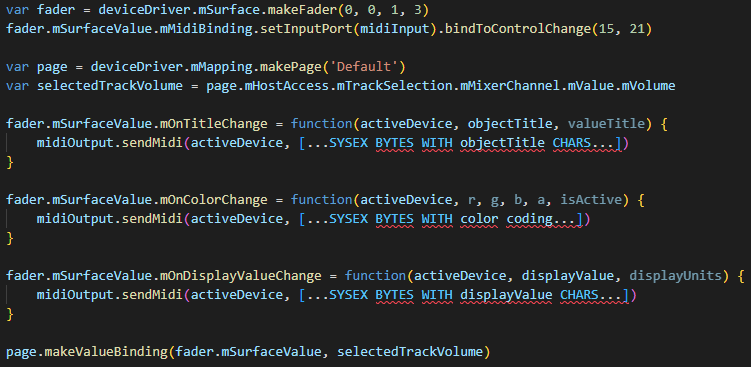|
Once upon a time in a small software development company, there was a talented team of programmers and designers who were passionate about music production. Their latest project was to develop apps for Steinberg Cubase Pro 12, a popular digital audio workstation.
The team understood the needs of professional musicians and producers, as they were avid users of Cubase themselves. They embarked on their journey, fueled by the desire to enhance the user experience and push the boundaries of music creation.
Their first app idea was to create a mobile companion for Cubase Pro 12, allowing users to control various aspects of the software from their smartphones or tablets. They wanted to provide musicians with the freedom to adjust settings, mix tracks, and even record ideas on the go.
With dedication and expertise, the team worked tirelessly to design an intuitive user interface that seamlessly integrated with Cubase Pro 12. They focused on functionality, ensuring that users could access key features of the software without compromising workflow or creativity.
As the development progressed, the team faced challenges and setbacks. They encountered compatibility issues, encountered hurdles in syncing data across devices, and had to optimize performance for different operating systems. However, they remained steadfast in their pursuit of perfection and innovation.
After months of hard work, the team finally unveiled their mobile companion app for Cubase Pro 12. Musicians and producers around the world were thrilled to have the power of Cubase at their fingertips, no matter where they were.
The app provided a smooth and efficient workflow, enabling users to control virtual instruments, mix tracks, adjust effects, and even collaborate with other artists remotely. It became an indispensable tool for professionals seeking creative freedom and flexibility in their music production process.
The team's success didn't stop there. They continued to develop additional apps that expanded the capabilities of Cubase Pro 12. They created an app for real-time music notation, allowing composers to write and edit sheet music seamlessly within the software. They also developed a unique app for capturing and manipulating live audio recordings, giving users new ways to experiment and refine their sound.
Their dedication and passion for developing these apps paid off. Musicians, producers, and composers worldwide embraced the new possibilities and creative freedom offered by the combination of Cubase Pro 12 and the team's innovative apps.
The team's journey in developing apps for Steinberg Cubase Pro 12 was a testament to their commitment to pushing boundaries, understanding user needs, and enhancing the music production experience. Their story became an inspiration for aspiring developers and a testament to the power of technology in the world of music creation.
How to develop apps for Steinberg Cubase Pro 12 ?
Developing apps for Steinberg Cubase Pro 12 involves a combination of technical skills, knowledge of music production, and understanding the Cubase Pro 12 software. Here are the general steps to develop apps for Steinberg Cubase Pro 12:
Understand Cubase Pro 12: Familiarize yourself with the features, functionalities, and capabilities of Cubase Pro 12. This includes studying the documentation, exploring the software, and understanding its user interface and workflow.
Identify App Goals: Determine the purpose and goals of your app. Decide whether you want to create a mobile companion app, a plugin, an integration, or a specialized tool that enhances specific aspects of Cubase Pro 12.
Plan the App's Features: Define the key features and functionalities of your app based on its intended purpose. Consider how your app will integrate with Cubase Pro 12 and what value it will provide to musicians and producers.
Choose Development Platform: Select the platform on which you want to develop your app. This could be iOS, Android, or desktop platforms like Windows or macOS, depending on the target audience and requirements.
Acquire Development Tools: Obtain the necessary development tools and resources for the chosen platform. This includes software development kits (SDKs), programming languages, integrated development environments (IDEs), and relevant documentation.
Design the User Interface: Create a user-friendly and visually appealing interface for your app. Ensure that it aligns with the design principles of Cubase Pro 12 to maintain consistency and familiarity for users. Consider usability, navigation, and accessibility in your design.
Implement App Functionality: Begin coding your app, incorporating the planned features and integrating it with Cubase Pro 12. Utilize APIs and frameworks provided by Steinberg to interact with the software's functionalities, such as audio processing, MIDI integration, or file handling.
Test and Debug: Conduct thorough testing of your app to ensure its functionality, stability, and compatibility with different operating systems and Cubase Pro 12 versions. Debug any issues and make necessary improvements based on user feedback or testing results.
Refine and Polish: Continuously iterate and improve your app based on user feedback, suggestions, and bug reports. Consider usability enhancements, performance optimizations, and new feature additions to provide a better user experience.
Prepare for Distribution: Once your app is stable and polished, prepare it for distribution. This may involve creating an installer or packaging the app for app stores, adhering to the respective platform's guidelines and submission processes.
Provide Documentation and Support: Create comprehensive documentation to guide users on how to use your app with Cubase Pro 12. Offer support channels, such as a website, forums, or email, to address user inquiries or issues.
Maintain and Update: Continue to support and maintain your app as new versions of Cubase Pro are released. Stay updated with Steinberg's development resources and announcements to ensure compatibility and deliver new features or improvements.
Developing apps for Steinberg Cubase Pro 12 requires technical expertise, a deep understanding of music production workflows, and attention to detail. By following these steps and continually refining your app based on user feedback, you can create valuable tools that enhance the music production experience for Cubase Pro 12 users.
|












